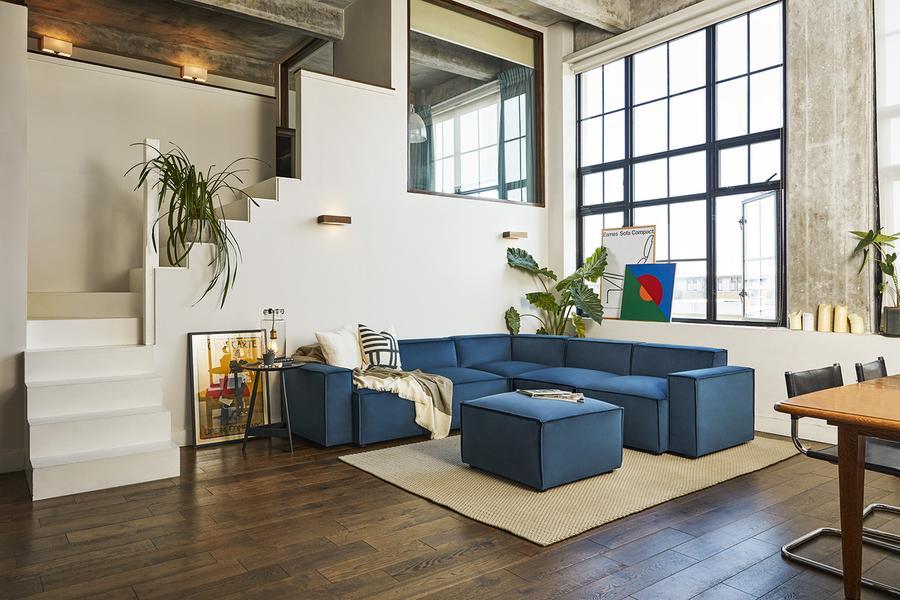Your Guide to the Differences Between Stools, Footstools and Ottomans

Your Guide to the Differences Between Stools, Footstools and Ottomans
You’ll often hear people using the words stool, footstool and ottoman interchangeably. But, there are slight differences between each of them, making them their own unique piece of furniture. If you’re wondering what the differences are and which item would be right for your home, then you’ve come to the right place as we explain everything you need to know in this guide.
What is a Stool?

A stool is defined as being a seat without arms or a back. Generally, stools are made from wood or metal and aren’t upholstered as they’re used more for perching on temporarily, climbing on to reach things or as decorative purposes. Of course, stools can come in all shapes and sizes. From bar stools and folding stools, to milking stools and joint stools, there’s plenty of options to suit your every need.
Our Model 00 Stools are the perfect accompaniment to any room and are available in both linen and velvet with a range of neutral and bolder colours to either match or contrast your existing furniture. Stools are an easy way to add interest and functionality to your rooms. Whether you use it in the living room for extra seating, in the bedroom as a side table if you have a smaller space or even in the bathroom as a decorative way to hold toiletries, they are a very versatile piece of furniture.
Should I Buy a Stool?
Undecided if a stool is right for your needs? Here’s a list of pros and cons to help you choose:
Pros:
- They’re built to last
- Can be moved around easily
- Provides extra seating
- Ideal for small spaces
- Modern and stylish
Cons:
- Can be uncomfortable if sitting for a long period of time.
- Can be bad for posture
- Less stability
- Smaller seat size
What is a Footstool?

As the name suggests, footstools were designed to be a counterpart to armchairs or sofas and provide you with a way to put your feet up and relax after a long day. Interior designers and home decor enthusiasts, however, have been finding unique and creative ways to use them for extra seating in hallways or in a study or even at the end of a bed.
Footstools differ from regular stools by being slightly lower to the ground for you to elevate your legs. They can also be wider than stools and cushioned too for extra added comfort. They’re ideal if you don’t have a big enough living room for a recliner sofa as they can be moved around to wherever you need and can create a lovely, decorative touch to your space.
Should I Buy a Footstool?
Here are the pros and cons of choosing a footstool over a standard stool:
Pros:
- Ultra-comfortable
- Can be used while working from home
- Reduces pressure on legs
- Provides extra seating for guests
Cons:
- They can be bulky and heavier to move
- Not comfortable to sit on for a prolonged period of time
- Can be difficult to store if you need more room
What is an Ottoman?

An Ottoman is a freestanding piece of furniture and the largest member of the stool-style seat. Ottomans are often padded and upholstered and also have a large, hollow centre for extra storage if needed. Traditionally, in Turkey, they were used as a low-level seating, but have since evolved into becoming a place to put your feet up or even as a coffee table for smaller spaces.
Our Model 03 range of Ottomans are sleek, stylish and simply designed to work in a variety of rooms and can be extremely versatile. Available in both velvet and linen with neutral colours or a statement teal, it can help to pull the room together or contrast and stand out as an individual piece.
Should I Buy an Ottoman?
If you’re thinking of purchasing an ottoman rather than a stool or a footstool, here is a list of the pros and cons to consider:
Pros:
- Very versatile
- Extra storage - perfect for small spaces
- Comfortable and stylish
- Provides extra seating
Cons:
- Can be heavy and difficult to move - especially if things are stored inside
- Due to the upholstery placing drinks or snacks on it will be tricky unless you use a flat, hard tray
- May need to be reupholstered after a while
For more information about ottomans, read our complete ottoman history and style guide.
Share
Tags
- design
- how to guide
- product
- TEMPLATE_GUIDE





